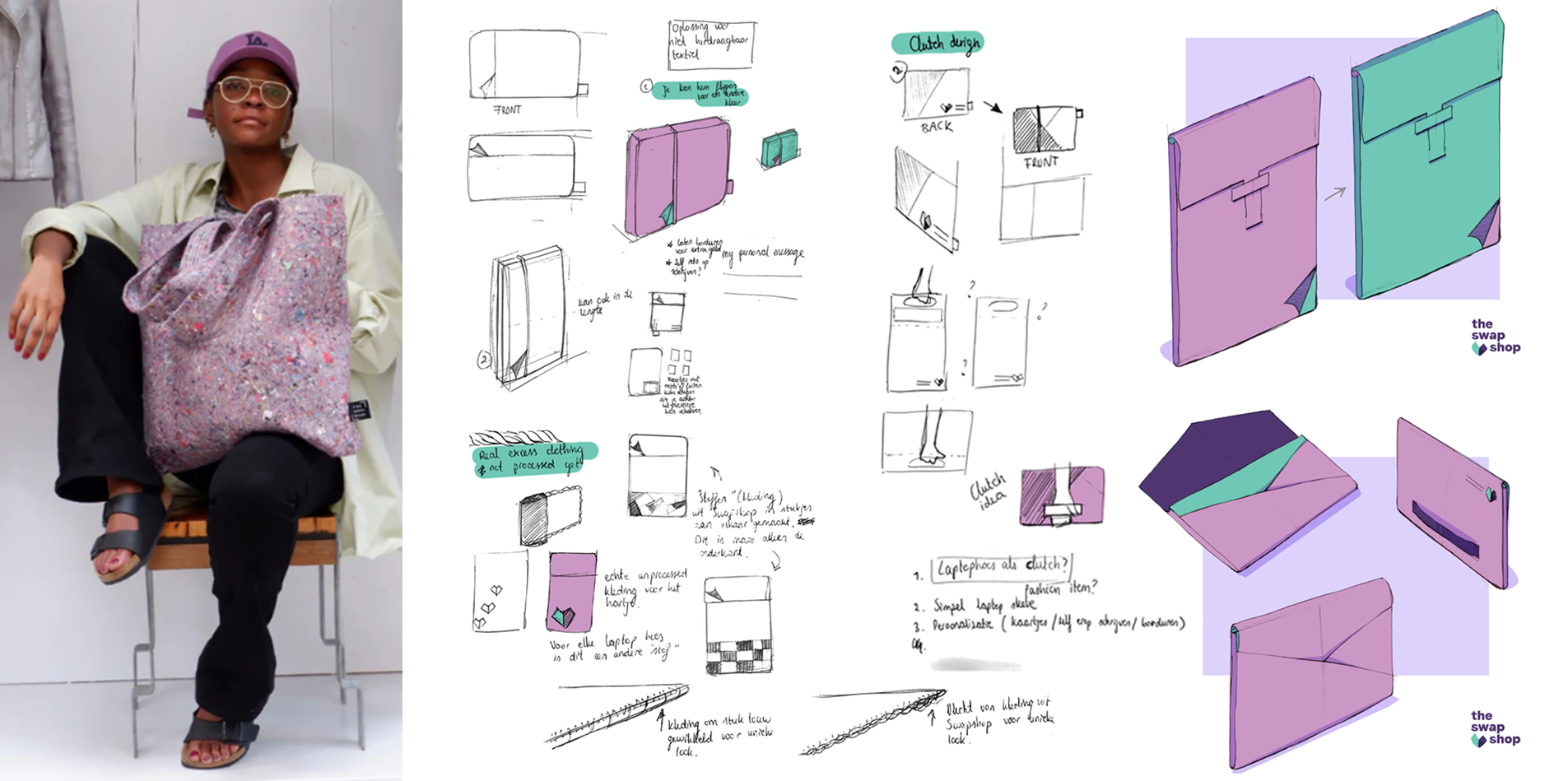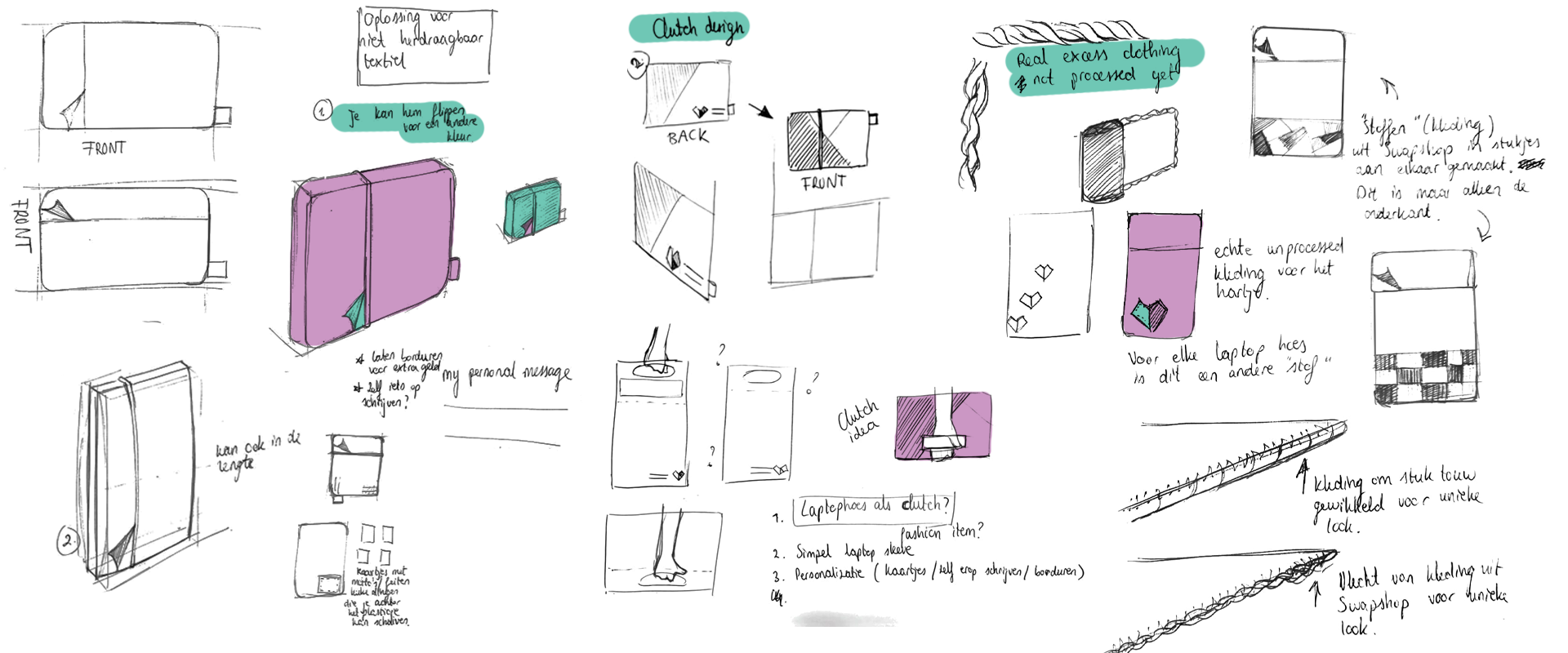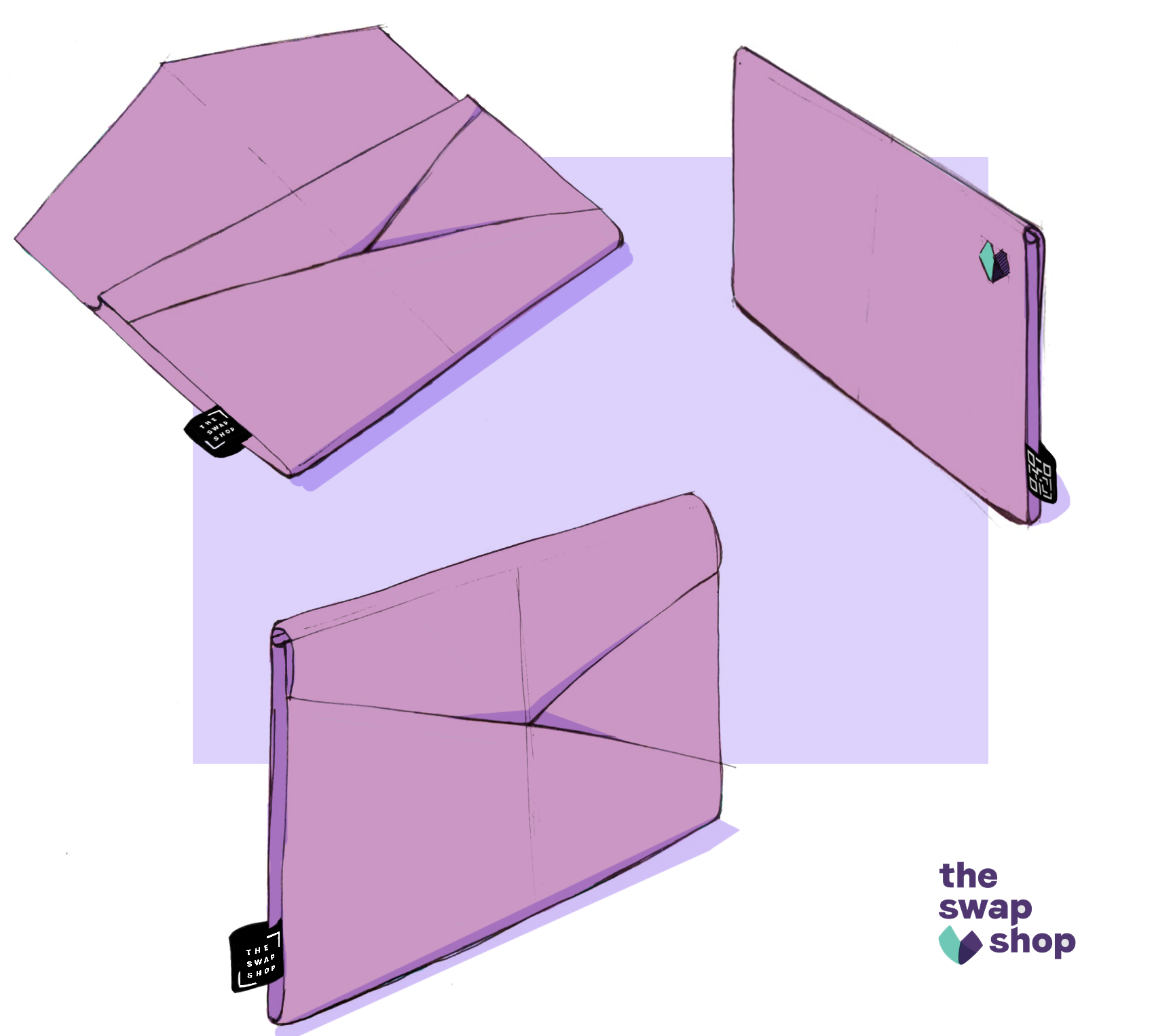
Circular product design, market research, project management, service design
Survey, focus group, thematic analysis, workshop, prototyping
Together with The Swapshop, we are creating a new circular product line that will be made from the textile surplus in Amsterdam.
The first product in this line will be a laptop sleeve. My role in this project is to conduct market research, translating the
results into concepts, and advising The Swapshop on good opportunities. This process is going to be captured in a documentary.
This project is made in collaboration with the following organizations: Mumster, Makers Unite, Rebel, Waag, and the municipality of Amsterdam.

The Swapshop is a chain of stores all about swapping clothes and other fashion items. The Swapshop offers a circular
alternative to the linear model of consuming and discarding clothing. In this way, we reduce the unnecessary waste,
overconsumption, and additional pollution within the garment industry.
Not all items that come in at our shops are suitable for swapping. Sometimes they are worn out, damaged, or out of date.
Per month, 500-800 KG of non-swappable textile remains in the stores of the Swapshop. Half of this textile (250-400 KG)
is wearable, so suitable for donation. The other half is not wearable.
We are creating a product line that offers a circular solution for the 250-400 KG non-recyclable textile.
The first product in this product line is a sustainable and recyclable laptop sleeve that is made here, in the Netherlands.
The first step in creating a circular and sustainable laptop sleeve is to have a better understanding of our market.
Therefore, I made a survey on design choices, pricing, and future reparation services.
In total, 86 participants answered the survey. It became clear from the results that almost all participants
live with sustainability principles in mind and would give up some of their comfort. The key findings from the questionnaire are as follows:
The key findings from the survey are as follows:
After analysing the results I began with visualing ideas.

We use the key findings to make new design choices. We decided to go for a minimalistic laptop sleeve (no extra pockets),
because the cost of creating a circular sleeve is already 30 euros (which does not include the material cost yet) and
participants do not want to pay more than 45 euros.
Our most important goal is to extend the life of our products as much as possible (e.g., ten years) before it
gets recycled. To achieve this, we chose three design strategies to work by:
I have made three concepts that use these strategies and metrics. Each concept has been tested in a focus group session.
We asked nine participants to join our focus group session. During this session, we discussed various topics like being transparent
about the origin of materials and the production journey through a QR code. Other topics that are discussed are pricing,
reparation services, and design concepts.
For this entry, I will only discuss the key findings regarding the design concepts.
The participants from the focus group indicated that:
Since all focus group participants were big fans of transparancy and a minimalistic design without extra elements,
we will incorporate the impact and story into the campagin and a QR code (on the sleeve).
We will use the clutch design to build further on. The next addition to this design will be a QR code that
leads the user to a new website with material information and the reparation service. Currently, we are
developing a user journey to map our envisioned ideas.
As mentioned before, we will create a new reparation service. This service will be based upon
the premise of swapping clothes, do-it-yourself reparation, and reparation done by The Swapshop.
We are exploring how these three elements can fit together to create a unique way of prolonging the life of our products.
Interested in this project and want to know more about it? Send me an email :)!
